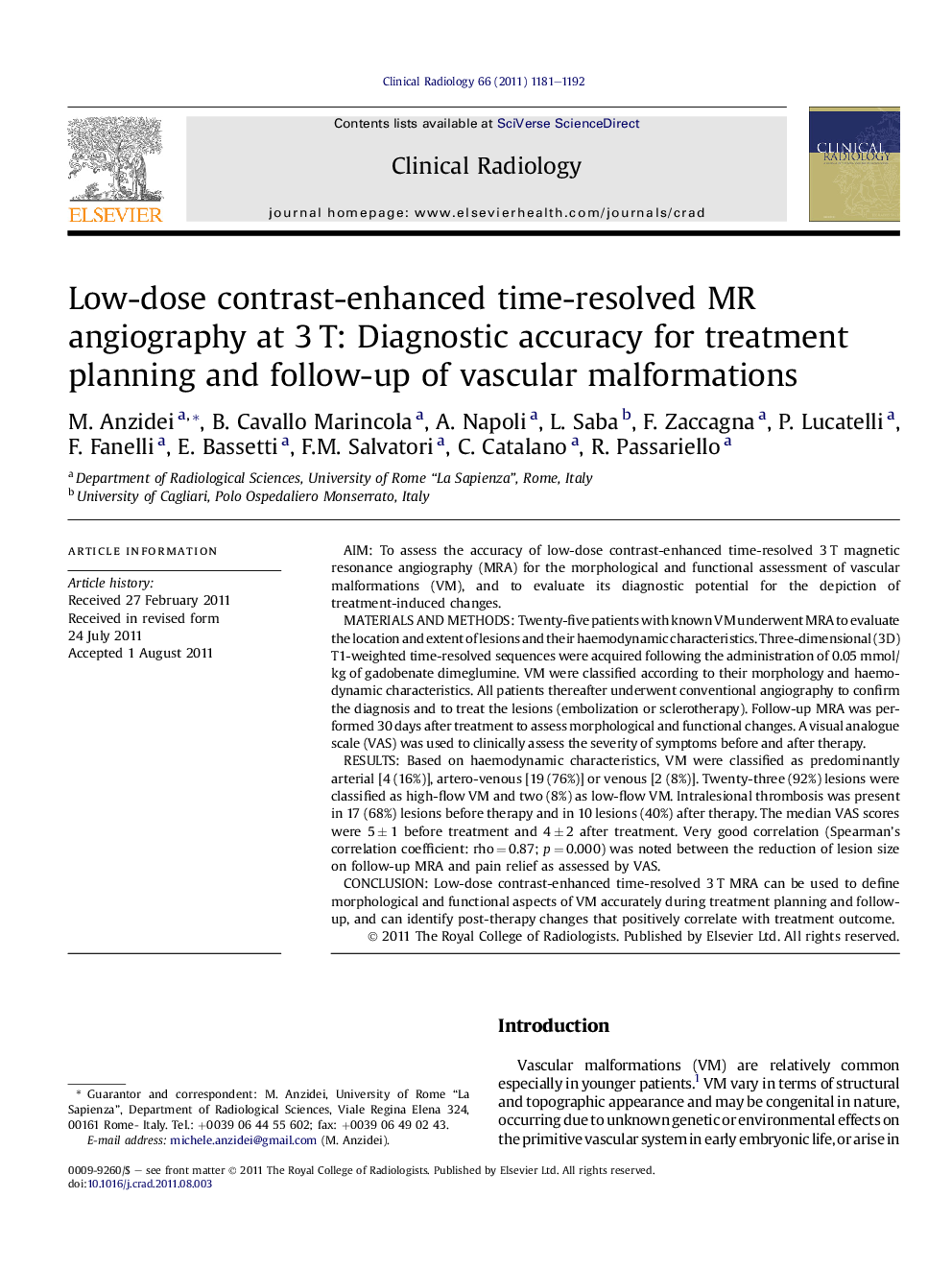| Article ID | Journal | Published Year | Pages | File Type |
|---|---|---|---|---|
| 3982412 | Clinical Radiology | 2011 | 12 Pages |
AimTo assess the accuracy of low-dose contrast-enhanced time-resolved 3 T magnetic resonance angiography (MRA) for the morphological and functional assessment of vascular malformations (VM), and to evaluate its diagnostic potential for the depiction of treatment-induced changes.Materials and methodsTwenty-five patients with known VM underwent MRA to evaluate the location and extent of lesions and their haemodynamic characteristics. Three-dimensional (3D) T1-weighted time-resolved sequences were acquired following the administration of 0.05 mmol/kg of gadobenate dimeglumine. VM were classified according to their morphology and haemodynamic characteristics. All patients thereafter underwent conventional angiography to confirm the diagnosis and to treat the lesions (embolization or sclerotherapy). Follow-up MRA was performed 30 days after treatment to assess morphological and functional changes. A visual analogue scale (VAS) was used to clinically assess the severity of symptoms before and after therapy.ResultsBased on haemodynamic characteristics, VM were classified as predominantly arterial [4 (16%)], artero-venous [19 (76%)] or venous [2 (8%)]. Twenty-three (92%) lesions were classified as high-flow VM and two (8%) as low-flow VM. Intralesional thrombosis was present in 17 (68%) lesions before therapy and in 10 lesions (40%) after therapy. The median VAS scores were 5 ± 1 before treatment and 4 ± 2 after treatment. Very good correlation (Spearman’s correlation coefficient: rho = 0.87; p = 0.000) was noted between the reduction of lesion size on follow-up MRA and pain relief as assessed by VAS.ConclusionLow-dose contrast-enhanced time-resolved 3 T MRA can be used to define morphological and functional aspects of VM accurately during treatment planning and follow-up, and can identify post-therapy changes that positively correlate with treatment outcome.
